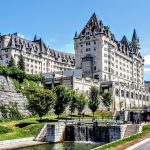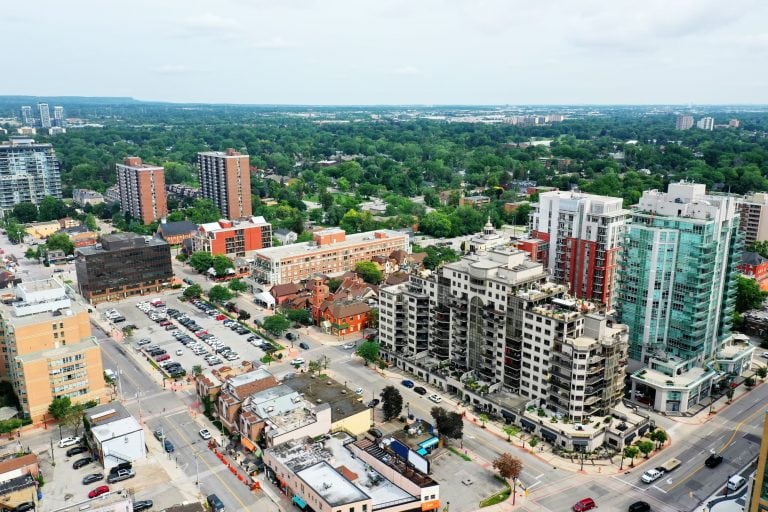Are you wondering how health coverage compares from province to province in Canada? With so much information out there, it can be tough to determine which province has the best health insurance. There can be big differences in the plans and services available from one province to the next. This post will give you a quick overview of the health coverage options available in each Canadian province. So whether you’re moving to a new province or just curious about your coverage options, read on for more information.
If you’re unfamiliar with Canada’s national healthcare system, it’s important to note that they’re administered by the different provinces and territories. Each province has their own health insurance plans, which means coverage varies from place to place. All citizens and permanent residents can receive medically necessary physician and hospital services for free, but coverage of other services will depend on where residency is located.
Disclaimer: The government healthcare systems in Canada do not cover 100% of all medical expenses. You may need a second insurer, which about two-thirds of Canadians have.
What Is Included In Each Province’s Health Plan?
Alberta
Those living in Alberta can receive coverage for medically necessary services from their doctors via the Alberta Health Care Insurance Plan (AHCIP). The plan offers some dental and oral surgical health care as well. What is determined as medically necessary is up to the physician’s discretion and patients must be registered with AHCIP to receive the benefits of the plan.
Full-coverage benefits of AHCIP include:
- Bariatric surgery (must be eligible through the Weight Wise Program)
- Diagnostic services like lab, radiology, and other procedures
- Optometry Treatments (some services are only partially covered)
- Oral surgeries, including the face and jaw (some of these services are only partially covered)
- Podiatry services requiring surgery in an Alberta hospital or non-hospital surgical facility
- Psychiatrist appointments
- Other medically required services provided by a physician
Full-coverage hospital stays, visits, and some accommodations, like meals, are also included with the above services. If a patient is being transferred to an inter-facility by ambulance, that is covered too.
Alberta also provides partially-covered services. This means that AHCIP will only cover up to a certain amount in a benefit year (For example July 1, 2022, to June 30, 2023). Any amount over that set number will need to be paid out of pocket or by a secondary insurer.
Partially-covered benefits of AHCIP include:
- Dental– While some dental services are fully-covered, some are not. Especially if services rendered are outside of Alberta. To see a breakdown of what procedures are fully or partially covered, you’ll need to check out the Oral Maxillofacial Surgery Schedule.
- Optometry– Some vision services are covered by AHCIP but must take place within Alberta. This includes eye exams. If a patient is 18 years and younger or 65 years and older, they can receive one complete exam, one partial exam, and one diagnostic procedure per benefit year.
- Podiatry– This only includes some services and only up to $250 per benefit year.
Ontario
The Ontario Health Insurance Plan (OHIP) helps pay for some health services such as appointments, emergency room visits, diagnostic testing, and surgeries. All services must have a medical reason to be covered by OHIP.
To qualify for an OHIP card, people must have their primary homes in Ontario, be physically in Ontario for 153 days of the first 183 days immediately after you start living in the province, be physically in Ontario for 153 days in 12 months, and at least one of the following:
- They are a Canadian citizen, Indigenous person, or permanent resident
- Applying for permanent residence in Canada
- In Ontario, working full-time, with a valid work permit
- A convention refugee or protected person
- Have a temporary resident permit
- A clergy member that’s legally staying in Canada and will be ministering full-time in Ontario for at least six months.
Benefits covered by OHIP include:
- All doctor visits that are medically necessary
- Hospital visits and stays include doctor and nursing services, diagnostic tests, accommodations and meals, medications, and even some medications for outpatients.
- Dental surgery in hospital
- Optometry– people 19 years and under and 65 years and over may receive one major eye exam per year. Those between the ages of 20 to 64 with medical conditions affecting the eyes may receive one major eye exam every 12 months and follow-up appointments.
- Podiatry– covers up to $135 per year $30 for X-rays. (Surgeries by a podiatrist are not covered.
- Ambulance services– Depending on the circumstances, OHIP could cover all or part of the costs.
- Travel for residents in northern Ontario. Those living a long distance away from medical care may get their travel and accommodation expenses covered by OHIP.
Ontario is another province with a high quality of life. It has a fairly high life expectancy rate of 81.46 years, second-lowest premature mortality rate, above-average mental health, and boasts one of the lowest suicide rates in the country.
British Columbia
If you’re living in British Columbia, you could be eligible for the Medical Services Plan (MSP) for British Columbia Residents which covers the cost of necessary medical treatments by a doctor or midwife enrolled in the MSP. This also includes dental and oral surgery when it’s completed in a hospital, as well as some eye examinations and orthodontic services, and most diagnostic services.
Benefits covered by the MSP include:
- Medically required dental and oral surgery performed at a hospital (including services for severe congenital facial abnormalities).
- Diagnostic services, like x-rays, are performed at diagnostic facilities and referred by their doctor.
- Medically required eye exams by an ophthalmologist or optometrist for adults between the ages of 19-64, as well as annual eye exams for children 18 years and under and adults 65+.
- Maternity care is offered by a doctor or a midwife.
- Other services covered as a supplementary benefit like acupuncture, chiropractic, massage and physical therapy, naturopathy, and non-surgical podiatry.
British Columbia is one of the top-ranked provinces for overall health. B.C. has one of the highest life expectancy ages in the world with an average age of 82.2 years. It also has relatively low premature mortality and cancer rates.
Manitoba
In the Manitoba province, residents physically present and living in Manitoba for at least 183 days a year are eligible for medically required services through Manitoba Health.
Manitoba Health also covers personal care home services to those approved by an assessment panel. This benefit covers an array of services, including meals, laundry, therapy, dietetic counselling, and much more.
Benefits covered by Manitoba Health include:
- Doctors’ services who practice within the plan.
- Diagnostic services like x-rays and laboratory services in an approved facility and referred by a physician.
- Surgery + Anaesthesia
- Hospital stays + necessary amenities and supplies
- Chiropractic services– Up to 7 visits for each resident of Manitoba per calendar year.
- Dental– Services are covered only when hospitalization is required.
- Optometrists– One routine eye exam every two years for children 18 and under and adults 65+. All patients are covered for an eye exam if deemed medically necessary. Several other types of eye tests are covered too.
Side note: If using a physician outside the plan, patients who are billed for insured services may be reimbursed by Manitoba Health.
New Brunswick
To qualify for New Brunswick Medicare coverage a person needs to be a Canadian citizen, or a person legally remaining present in Canada with a permanent, main home in New Brunswick. International students can also be eligible if they meet certain additional criteria.
Sometimes the medical practitioner will bill New Brunswick Medicare or the patient directly. If the bill is above the Medicare rates, the patient should be notified and sign a waiver ahead of time. Medicare will not reimburse any amount in those cases.
Benefits covered by New Brunswick Medicare include:
- Most medically required services by a doctor in a physician’s office or approved hospital.
- Specific medically required dental procedures by a dentist in a hospital.
Any services insured by New Brunswick Medicare must be rendered in an insured hospital and will provide services like:
- Accommodations + meals
- Diagnostic services like laboratory, X-rays, and more.
- Medicine
- Nursing services
- Operating and delivery rooms + anesthetic facilities
- Physiotherapy, occupational, and speech therapies + audiology
- Radiotherapy
- Surgical supplies
Newfoundland and Labrador
All people with their homes in Newfoundland and Labrador and are legal residents of the province may be eligible for the Medical Care Plan. This includes Canadian citizens, permanent residents, international workers, and international post-secondary students.
Benefits covered by the Medical Care Plan include:
- Appointments to a doctor’s office, beneficiary’s residence, or hospital
- Diagnostic and surgical procedures
- Medically necessary dental procedures are performed in a hospital by a dentist or oral surgeon.
- Full maternity care
- Pre and post-op care
- Radiology interpretive services
- Therapeutic procedures, which include anesthesia
Nova Scotia
Nova Scotia has several health insurance programs through the Nova Scotia Medical Service Insurance, covering some dental, hospital, medical, and optometry services. To become eligible and receive a Nova Scotia Health Card, you must be a Canadian citizen with your main home in Nova Scotia, be in the province 183 days every calendar year, and be registered with MSI.
Benefits covered by Nova Scotia Medical Service Insurance include:
- Addiction Services
- Prostheses Programs
- Home Health Care and other services that are considered continued care.
- Emergency Health Services
- Mental Health Services
- Pharmacare
Quebec
The Quebec Health Insurance Plan (RAMQ) covers medical and hospital services conducted by a general practitioner or a medical specialist. It’s recommended to have supplemental health insurance to cover other health expenses not under the plan. To be eligible for RAMQ, people must be legally authorized to be in Canada and have their primary homes in Quebec. They must also be physically in Quebec for at least 183 days in a 12-month period.
Benefits covered by RAMQ include:
- Exams
- Diagnostic tests
- Therapeutics
- Psychiatric treatments
- Surgery
- Anesthesia
- Some radiology services
- Optometric services– children, those 65+, or the visually impaired may receive free optometry services.
- Dental services– oral surgeries performed at a hospital are covered as well as most dental services for children under ten years old.
- Some prescription medications
- And more
Aside from an exception, these medical services should take place in clinics, hospitals, community service centres, care and rehab centres, and a patient’s home.
Quebec is another quality province for overall health with low premature mortality rates and those due to heart disease and stroke. It’s also one of the best provinces for mental health as it ranks second across all provinces and territories.
Saskatchewan
Those in Saskatchewan can receive healthcare through eHealth Saskatchewan, which covers all medically necessary services performed by a physician. There are extra benefits for lower-income working families. People can be eligible for its coverage in a few different ways. Here are some of the main forms of eligibility:
- If they have been living in the province for at least five months out of a year and have made their primary home in Saskatchewan, then they’re eligible for health coverage.
- Also, those in the Canadian Forces or even an inmate in a federal penitentiary are covered, as well as their spouses and dependents.
- If they’re just moving to Saskatchewan, there is a bit of a lag before benefits kick in. Coverage takes effect on the first day of the third month of living here. For example: If residency began on August 19th then coverage would start on November 1st.
Benefits covered by eHealth Saskatchewan include:
- Physiotherapy or occupational therapy
- Mammogram screening for women ages 50 to 69
- Immunization coverage
- HIV testing
- STI treatment
- Addiction services
- Mental Health Services
- Dental services
- Optical services
- Podiatry services
- Emergency transportation
- Prescriptions, supplies, and appliances
How does the quality of care compare from one province to another
Overall each province in Canada offers a wide variety of coverage, but there are some better than others. Of the provinces on this list, the top provinces are British Columbia, Ontario, Quebec, and Alberta. As we mentioned above, this is just an overview. If you want to relocate to Toronto or another city, you’ll want to take a closer look at its website and what it says in detail about its health coverage. We hope you’ve found this article helpful in giving you a clearer understanding of comparing health coverage by province.






















